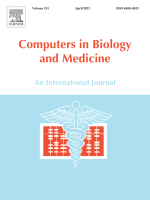
Computers in Biology and Medicine
When observing a particular image or object, one’s perception depends upon prior expectations, memory, and cognitive abilities. It is hypothesized that cognitive processing in the form of top-down or bottom-up processing could be determined via analysis of the eye fixation scan path. To assess the variations in scan paths, 7 subjects underwent 5 change-detection trials. During each trial, they were presented with a specific set of images via a MATLAB program, in which the original image alternated with a modified image consisting of a single change. An open-source program called GazeRecorder was used to track the subject’s eye movements and to record the eye fixations. The scan path was then analyzed through the use of a 4 by 4 grid pattern superimposed on the image to determine the subject’s eye fixation distribution pattern in terms of Boxes Viewed and Concentration within a single area. It was determined that higher Concentration was positively correlated with faster Detection Speed (R = 0.84), while higher number of Boxes Viewed was negatively correlated with Detection Speed (R = −0.71). Among the subjects, the more optimal scan paths were found in those with a balance between Concentration and Boxes Viewed, as subjects with a more balanced approach had the greatest Accuracy (p = 0.02). This indicates an optimal scan path involves both top-down and bottom-up processing to more efficiently identify a change. Moreover, the methodology developed in this study could be used in the home or clinic for quantitative assessment of improvement following therapy in patients with neurological deficits.